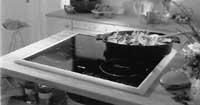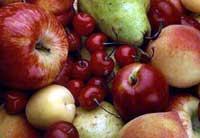Food poisoning
2000/06/01 Agirre, Jabier - Medikua eta OEEko kidea Iturria: Elhuyar aldizkaria
In summer the risks are not exclusive to beaches and pools, and is not the only responsible for the alterations that our health may suffer. Because in your kitchen you also have risks and so today we will see the tips to follow to prevent and prevent food poisoning.
We know that with heat bacteria multiply, so during the summer food can deteriorate in a short time (a few hours). Food poisoning is common in summer, as it costs to keep food in good condition. Often, and without realizing it, we leave the food cooked at room temperature, and with the heat of the summer the microorganisms multiply very quickly, so after a few hours this food can not be consumed again.
What happens?
The origin of these toxiinfections is usually digestive (contaminated food, in poor state by consumption) and the symptoms are diarrhoeal, vomiting, stomach pain and increased temperature (fever). The discomfort does not appear immediately after eating contaminated food, but in hours (there may be between 2 and 40 hours). This picture lasts for one or two days and then slowly disappears. Complications may occur in some people.
As with other diseases, the consequences in children and adults are often more serious.
In the first because their defense system remains incomplete; in those of the second group, precisely for the reverse reason, that is, because their defenses have fallen.
In these age groups, in addition to increasing the number of food poisoning, the risk of sequelae increases. Once toxiinfection occurs, it tends to be chronic, that is, the microorganism stays in the body and its defensive system is not powerful enough to expel the germ. Therefore, in these cases the pharmacological treatment is usually the administration of antibiotics. If the germ is a bacteria, keep it for a long time.
Except in exceptional cases (or in extreme situations) in which the doctor must be called immediately, in the rest of the cases the ingestion of bad food does not produce strange effects. However, if the symptoms last longer than three or four days and do not show signs of attenuation or decrease, it will be preferable to consult the doctor, since the risk of dehydration is there.
In some cases it is not difficult to suspect that the food is damaged, since it has lost its original color or appearance, is moldy or has a rare (or unpleasant) taste. But in many other cases, the presence of microorganisms does not appear to us at all, nor do we remember it. Therefore, and since prevention is better than taking remedies, it is advisable to follow simple and simple measures. Considering this, it will circulate without any problems. Happy!
Follow these measures
- Perishable foods should always be kept in refrigerator. Let them cool fresh (cooked, boiled or fried immediately) and then keep them cold. It should always be kept closed or covered, and if possible without contact, especially if one is raw and the other is cooked previously.
- They should not be consumed after a long time in the refrigerator. The proliferation of microorganisms at high temperature is fast, but they are not completely dead at low temperature, so during their stay in the refrigerator, despite their slowness, they have continued to increase, so we should not consume foods that have remained in the refrigerator more than four days (cooked previously).
- Beware of transport. If we buy frozen, it is not advisable to spend too much time until we take them from the store and put them in the freezer of your house.
- If it is cans, the container should not have any hole, step or bulge. Cans should be stored in a dry place without moisture, as far as possible from heat sources (kitchens, etc. ).
- It is recommended to consume in the place where artisanal, non-industrial soft drinks are made, since their transport can be problematic (they do not usually contain preservatives).
- Beware of ice cream. The frosts of street vendors are not subject to such strict controls, so in these cases it is necessary to review the state of conservation and sale of the same product.
- Molluscs or shellfish are also not out of danger. They should always have a minimum health guarantee and if you have doubts, it is better to recook at home, although you would eat raw more at ease.
- But eggs and mayonnaise are the cause of most food poisoning and almost always salmonella is the germ that pollutes. If you prepare a tortilla it should be well made and not with almost raw egg. If you are in a restaurant and the one that has taken you has a bad look (little done or quite raw), reject it motivated. Do not cook with raw egg to avoid problems. Industrial mayonnaises are usually prepared with many additives or additives, making it more difficult to proliferate bacteria. However, since the house mayonnaise are usually sweeter, the eggs used should always be fresh, always clean from the outside and without any cracks or cracks. Add lemon and/or vinegar to mayonnaise, never store leftovers for another occasion and, if possible, cook and serve before eating.

Gai honi buruzko eduki gehiago
Elhuyarrek garatutako teknologia






